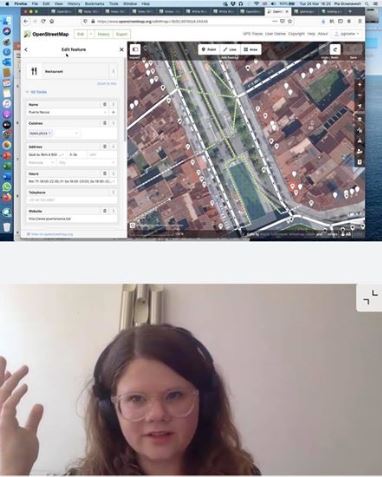
To celebrate ALL DIGITAL week the Open-Ae consortium held a webinar introducing a participatory activity that people can do to be engaged in a open-source movement.
Open Street maps was founded by Steve Coast in the UK in 2004. The basis for inspiration of Open Streets was the Wikipedia and concern about how prominent proprietary map data was growing around the world. Now more than two million people are registered on open street maps. Some of the benefits of the map are how user driven they are. If something is missing on open street maps you can easily add it yourself, and the change is there instantly. OpenStreetMap emphasizes local knowledge. Open Street Maps works faster than google maps for example as the data added to open street maps does not need to be verified by a third party.
Cyclists and hikers enjoy using open street maps as the community sourced maps means public bike lanes, and hiking trails are more easily found. Areas of functional public interest like rest areas or free camp grounds which may not be commercial can be easily added to the map.
Of particular importance to the Open AE course is the use of Open data. Open data means you are free to use it for any purpose as long credit is made.
The webinar aimed to provide a quick introduction to open street maps. It showed how you can make edits in open streets maps, how you can actively map neighbourhoods or city ares using the aerial photography mode. Of particular importance are the user diaries. In the user diaries users can ask questions and see if items on the map are correct. Or they can also leave a note to another user letting them know that a new road may develop, or trail and when that is ready another user can add it. It is also possible to do this for public transportation routes.
Due to the covid-19 crisis some diary notes were left to try and use Open-Street Maps to provide support for local communities. There were notes encouraging people to update the contact information and location of essential services like schools so parents can maintain better contact with schools during the crisis.
